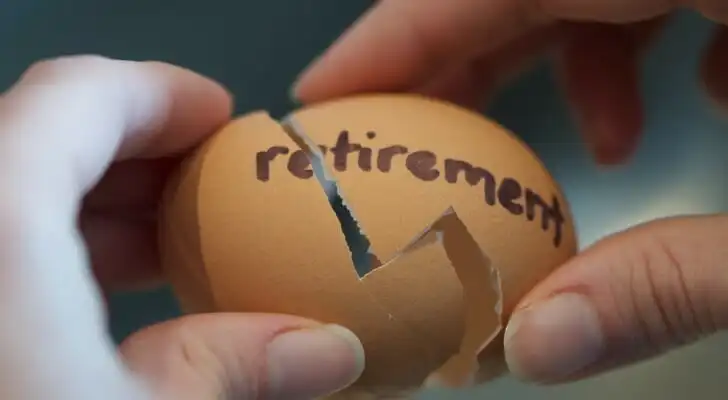A Roth 401(k) offers a way to build retirement savings with after-tax dollars, allowing for qualified tax-free withdrawals later on. If you have one of these accounts or are considering opening one, you might be wondering at what age can 401(k) withdrawals be taken tax-free. Generally, to take tax-free withdrawals from a Roth 401(k), you must be at least age 59 ½ and have held the account for at least five years. Meeting both conditions allows earnings and contributions to be withdrawn without owing additional taxes.
A financial advisor can help you manage your retirement savings and create a strategic plan for withdrawing that money when you need it. Connect with an advisor today.
What Is a Roth 401(k) and How Does It Work?
A Roth 401(k) is a workplace retirement plan that blends features of a traditional 401(k) and a Roth IRA. You contribute after-tax dollars through payroll deductions, meaning income taxes are paid before the money goes into the account. In retirement, qualified withdrawals (including investment gains) can be taken tax-free.
Unlike a traditional 401(k), contributions to a Roth 401(k) do not lower your taxable income for the year they are made. However, Roth 401(k)s offer the potential for tax-free growth on investments. Contribution limits mirror those of traditional 401(k)s and may include employer matching contributions, though any employer match is placed in a pre-tax account and subject to separate tax rules.
In 2026, you can contribute up to $24,500 to a Roth 401(k), plus a $8,000 catch-up contribution if you’re 50 or older. For active participants between 60 and 63, the catch-up contribution limit jumps to $11,250.
The plan offers flexibility for individuals who expect to be in a higher tax bracket later or who value tax diversification in retirement. And like Roth IRAs, Roth 401(k)s are not subject to required minimum distributions (RMDs), which increase a person’s taxable income and potential tax liability.
Roth 401(k) Withdrawal Rules

There are several basic Roth 401(k) withdrawal rules that you may just follow to avoid penalties or unnecessary taxes. These withdrawal rules are:
1. Qualified Withdrawals Are Tax-Free
If you wait until you’re 59 ½, you can take withdrawals from your Roth 401(k) without paying taxes. That applies to both your contributions and investment earnings. With a traditional 401(k), you receive a tax deduction up front but pay income tax on both contributions and earnings when you make withdrawals.
2. Withdrawals Before Age 59 ½ Can Trigger Taxes and Penalties
Roth 401(k) withdrawals made before age 59½ are generally considered non-qualified and can trigger taxes and penalties on the earnings portion of the withdrawal. Contributions, which were made with after-tax dollars, can typically be withdrawn tax- and penalty-free.
However If you take an early withdrawal, the distribution is prorated between contributions and earnings. For example, suppose your Roth 401(k) holds $20,000, $18,000 in contributions and $2,000 in earnings. If you withdraw $10,000 early, $9,000 will come from contributions (no tax or penalty), and $1,000 will come from earnings. The $1,000 in earnings will be taxed as ordinary income and will incur a 10% early withdrawal penalty of $100, unless you qualify for an exception.
Because the penalty and tax apply only to the earnings portion, early withdrawals generally reduce the value of your savings. If you need access to funds, taking a 401(k) loan may be a better option than a taxable distribution.
3. The Five-Year Rule
To withdraw earnings from a Roth 401(k) tax-free, the account must have been open for at least five years, and the withdrawal must occur after you reach age 59 ½ or meet another qualifying exception, such as disability. The five-year period begins on January 1 of the year you make your first contribution.
For example, if you make your first Roth 401(k) contribution in June 2026, your five-year clock begins on Jan. 1, 2026. If you continue contributing and take a withdrawal in July 2031 after turning age 59 ½, both your contributions and any earnings can be withdrawn tax-free.
Additional Questions About Roth 401(k)s
There are additional rules dealing with a Roth 401(k) that you need to be aware of because these situations typically impact potential withdrawals. These rules involve rolling money into the account so that you can withdraw funds or take a loan from your account and then attempt to pay it back.
Can You Roll Your 401(k) Into a Roth 401(k)?
You may be able to convert your 401(k) into a Roth 401(k) if your employer offers it. There can be good reasons to do this, the biggest being that you won’t have to pay taxes on withdrawals. However, you will have to pay income taxes on the amount you convert. To cover the taxes, you’ll need to set this cash aside, outside of your retirement account.
Can You Take a Loan from Your Roth 401(k)?
Instead of making an early withdrawal, it could be a better option to borrow from your Roth 401(k). You need to discuss this with your HR department and see if they’ll allow it. Know that you could be sabotaging your retirement with this type of loan and if you lose your job, you may have to pay the remainder of the loan in full.
Do Roth 401(k)s Have RMDs?
Tax-deferred accounts like traditional IRAs and 401(k)s are subject to required minimum distributions (RMDs), mandatory withdrawals that start at age 73 (75 for people born in 1960 or later).
RMDs do not apply to Roth IRAs, but Roth 401(k)s previously were subject to them. However, the SECURE Act 2.0 of 2022 eliminated RMDs for Roth 401(k)s and similar employer-sponsored Roth accounts that began in 2024. That means Roth 401(k)s no longer have RMDs, making them an even more tax-efficient savings vehicle.
Are Roth 401(k) Rollovers Withdrawable Immediately?
If you roll over a Roth 401(k) to a Roth IRA, your original five-year clock from the Roth 401(k) generally does not carry over unless you already had a Roth IRA open. If the Roth IRA is new, a separate five-year clock starts and earnings withdrawn before meeting this requirement may be taxed and penalized. Contributions rolled into the Roth IRA can be withdrawn at any time tax- and penalty-free, but earnings remain subject to the five-year rule.
Bottom Line

Now that you know the Roth 401(k) withdrawal rules, you can better understand how Roth 401(k)s works and if they’re the right choice for you. They have some big benefits. Your contributions can grow without you worrying about taxes or penalties when you make a qualified withdrawal. Still, there are other aspects to consider when contributing to a Roth 401(k) that can help you when trying to navigate what you want to do.
Tips for a Financially Successful Retirement
- Whether you’re about to retire or it’s still decades off, managing multiple accounts can be hard. A financial advisor can take a comprehensive look at your finances and help manage your money on your behalf. Finding a financial advisor doesn’t have to be hard. SmartAsset’s free tool matches you with vetted financial advisors who serve your area, and you can have a free introductory call with your advisor matches to decide which one you feel is right for you. If you’re ready to find an advisor who can help you achieve your financial goals, get started now.
- The retirement tax laws in the state you want to retire in can have a big impact on your retirement. By minimizing your retirement tax burden, you can maximize the value of your savings in retirement.
- When saving for retirement, it helps to know exactly what your goal is. After all, how will you know you have enough? SmartAsset’s retirement calculator allows you to input your information and get an achievable savings goal that you can plan for.
Photo credit: ©iStock.com/Douglas Rissing, ©iStock.com/AndreyPopov, ©iStock.com/AndreyPopov
